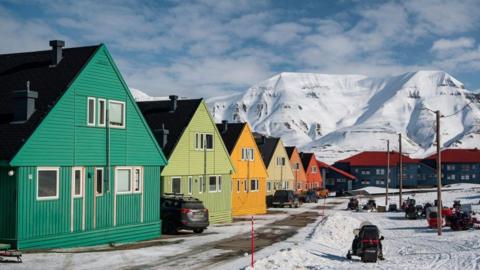High above the Arctic Circle, the archipelago of Svalbard lies halfway between mainland Norway and the North Pole.
Frozen, mountainous, and remote, it's home to hundreds of polar bears and a couple of sparse settlements.
One of those is Longyearbyen, the world's northernmost town, and just outside the settlement, in a decommissioned coal mine, is The Arctic World Archive (AWA) - an underground vault for data.
Customers pay to have their data stored on film and kept in the vault, for potentially hundreds of years.
"This is a place to make sure that information survives technology obsolescence, time and ageing. That's our mission," says founder Rune Bjerkestrand, leading the way inside.
Switching on head-torches we descended a dark passageway and followed the old rail tracks 300 metres into the mountainside, until we reached the archive's metal door.
Inside the vault, stands a shipping container stacked with silver packets, each containing reels of film, on which the data is stored.
"It's a lot of memories, a lot of heritage," Mr Bjerkestrand says.
"It's anything from digitised art pieces, literature, music, motion picture, you name it."
Since the archive's launch eight years ago, more than 100 deposits have been made by institutions, companies and individuals, from 30-plus countries.
Among the many digitised artefacts are 3D scans and models of the Taj Mahal; tranches of ancient manuscripts from the Vatican Library; satellite observations of Earth from space; and Norway's treasured painting, the Scream, by Edvard Munck.
